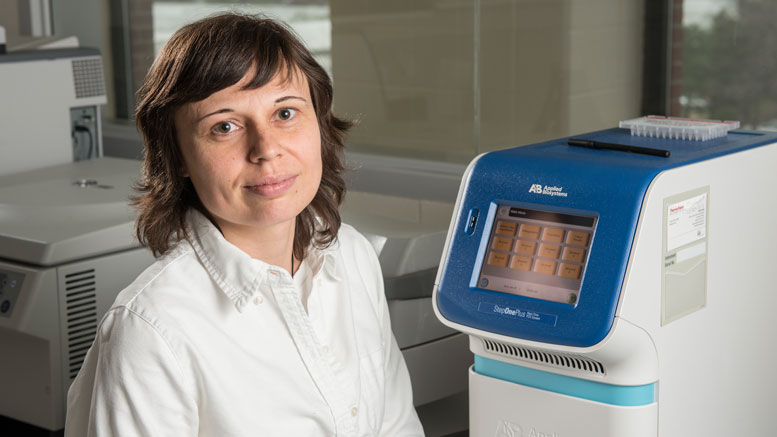|
Click to listen to this article
|
Vegetable growers in Michigan have long sought a more rapid and efficient method to screen for the damaging plant disease, aster yellows. Primarily affecting carrots and celery in Michigan, aster yellows causes plants to have stunted or deformed growth, distorted or discolored foliage and a bitter taste, rendering infected plants unmarketable.
Nearly a decade ago, in stepped Michigan State University associate professor and vegetable entomologist Zsofia Szendrei to address disease response. Szendrei’s research, teaching and outreach center around the ecology and management of arthropods that occur in vegetable production. One such arthropod, the aster leafhopper, carries the pathogen causing aster yellows.
Szendrei has employed a laboratory procedure using a molecular biology technology called polymerase chain reaction – which amplifies samples of genetic code, allowing researchers to analyze it more clearly. It tests leafhopper specimens to estimate the percentage of aster yellows infected insects in any given field. Funding for Szendrei’s research came from MSU Project GREEEN, MSU AgBioResearch, the Michigan Vegetable Council and the Michigan Department of Agriculture and Rural Development (MDARD).
“The original protocols for aster yellows screening sometimes took days to get results. Growers can’t afford to spend that much time waiting to know if they need to spray, so we had to come up with a better solution for them,” Szendrei said.
Szendrei’s lab partnered with the Michigan Celery Promotion Cooperative, Michigan Carrot Committee, and MSU Extension to build a diagnostic network for the screening of aster leafhopper infestations. Growers, field managers, scouts, or MSU Extension specialists conduct periodic sweeps of vegetable crops around the state to collect leafhopper specimens that are then brought to the lab. In as little as 24 hours, Szendrei can send a group-text to the growers with the results.
“The growers have really embraced this program,” Szendrei said. “Having this technology at their service and being able to receive accurate data in real-time has made a big difference in their fields.”
Michigan’s carrot and celery growers are integral to the state’s agricultural economy, which prides itself on its variety of commodities as the second most agriculturally diverse state in the U.S. Michigan’s carrot growers produce approximately 150 million pounds of carrots, worth $15 million per year. The celery industry generates approximately $19 million annually from 110 million pounds grown. The state ranks fourth nationally for carrot production and second nationally for celery.

